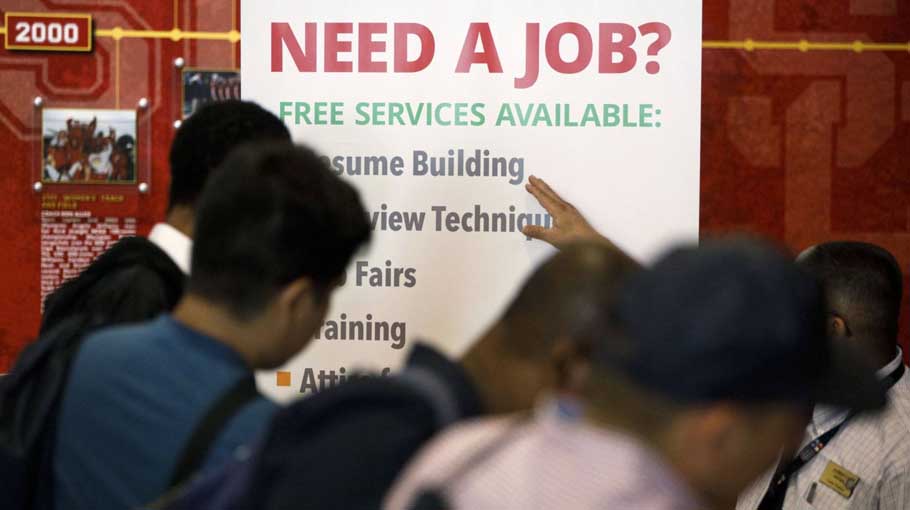Employers beware: Hiring software could weed out future stars

Finding the right person for a job can seem impossible when hundreds are applying for a single position at once. Many employers have turned to software to whittle those candidates down, but there’s a problem: The software can snub perfectly good workers.
So-called Application Tracking Systems, the official term for resume-filtering software, were designed to help companies cope with the growing number of job applications flooding in for each vacancy over the past two decades. Nearly all Fortune 500 companies use this kind of software for recruiting, according to a Harvard Business School study released earlier this month.
The study found that millions of qualified job seekers were being rejected at the first stage of the application process because they didn’t meet certain initial criteria set by the recruitment software. For example, the software might put someone in the “no” pile if it detects a one-year gap in employment, disadvantaging people who have been on long-term parental leave or are veterans. The software also sometimes uses proxies like a college degree to assign attributes like work ethic, barring people who might have gained those qualities from other kinds of life experience.
This is something many in the recruitment industry have known for years. While hiring software is often useful, it can also be inflexible, miss valuable traits such as soft skills and inadvertently hinder the job market. Smaller companies in particular need to reconsider their growing use of algorithms for finding talent, especially in an increasingly tight job market.
Today’s global labor shortage has, uniquely, coincided with high unemployment rates. In the U.S., for instance, job openings between the fourth quarter of 2019 and May 2021 rose by a third, yet more than 9 million people remained unemployed, according to Deloitte Insights.
But although they were designed to improve hiring, algorithms can exacerbate the talent shortage by rejecting millions of candidates at the outset, according to the Harvard study.
These systems are also at risk of being gamed. For years a popular method for getting through recruitment algorithms has been to fill a resume with key words that are relevant to the job, in white font. That way only the algorithm detects them and pushes them further along in the interview process, potentially over better fits. Software is getting better at looking out for keyword spam but that doesn’t stop people from trying, according to Lee Tonge, founder The CV Store, a British resume writing agency.
Some colleges are even preparing their students to deal with hiring algorithms. Around 250 universities across the U.S., Canada, U.K. and elsewhere use a startup called VMock Inc. to help their students tailor their CVs with software that will, with a forthcoming update, be able to analyze a job description and then suggest changes to a resume to better reflect what’s wanted. It could, in theory, help a graduate send out 20 different resumes tailored to 20 different job descriptions, according to VMock’s founder, Salil Pande. But that might also disadvantage other, just as promising, candidates who don’t have access to such tech.
Tools for job seekers will only get more sophisticated. Sami Makelainen, the head of strategic foresight at Australian telco Telstra Corp. Ltd., carried out a skunkworks project last year in which he created a digital human avatar to answer questions to an automated interviewer. The experiment was brief and not an official Telstra project, but it made a startling discovery. The digital avatar scored about as well as a live human who took the same interviews.
A person with programming experience could, in theory, set up a bot to answer interview questions for multiple jobs. “You could easily have them do 100 interviews for you in a week,” Makelainen says. In this case, the more tech-savvy could have an advantage.
There’s nothing new about job candidates putting their best foot forward, but with hiring algorithms working from inside an inscrutable black box, and candidates themselves eager to find ways to circumvent them, the process of filtering applicants looks increasingly messy.
Tonge of The CV Store knows of several small-to-medium sized employers whose recruitment agencies have struggled to find candidates to fill positions, which he thinks comes from an over-reliance on hiring software. “Some companies don’t even know how the (hiring algorithms) are working,” he said. “They might not be aware they’re missing out on good candidates.”
One solution is for companies to resist the temptation to buy futuristic recruitment software that doesn’t have clear ROI. There are some vendors who claim their algorithms can analyze personalities by reading facial expressions and gestures, but much of this tech has been discredited by researchers. Makelainen says they are best avoided.
To be fair, hiring algorithms can be useful. They can ignore gender, race or schooling to help employers seek out a more diverse array of candidates, and large companies especially can justify using them to parse hundreds of applicants.
But employers should take some precautions. The Harvard study suggests audits to ensure algorithms are not inadvertently rejecting perfectly good candidates from the outset.
Tonge has a good recommendation for smaller firms too: If you can, drop the resume screening software altogether. You’ll have a better chance of finding the right people by looking at their resumes yourself.
Parmy Olson is a Bloomberg Opinion columnist covering technology and is the author of “We Are Anonymous.” Source: Bloomberg



